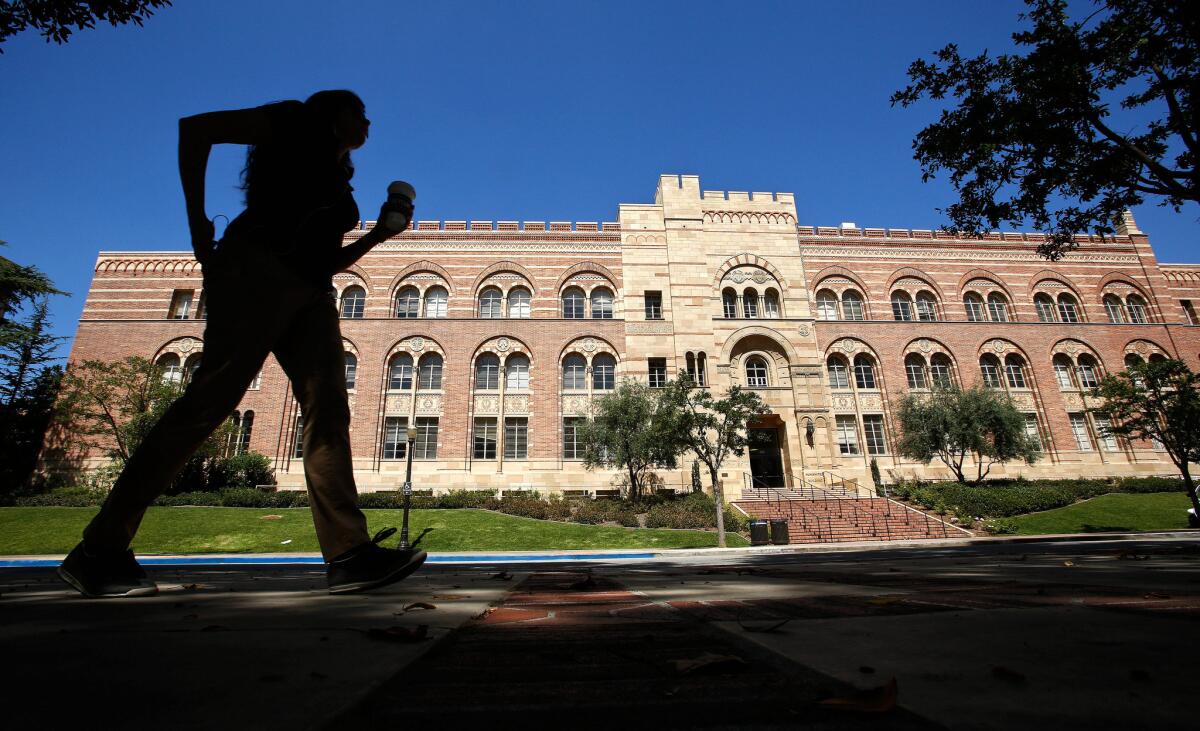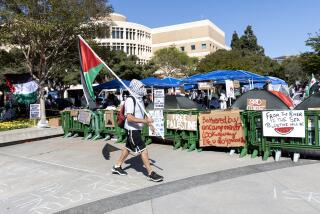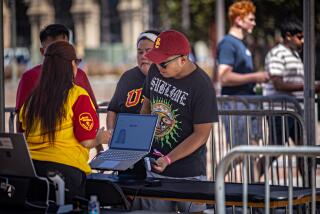International students upended, unsure if they can continue U.S. studies amid new federal rules

Unlike many international students, Grace Wang of Claremont McKenna College opted against returning to Beijing and moved to a friend’s home in March when her campus switched to online classes and sent students home amid the coronavirus emergency. She felt it was best to stay in America.
But as Wang awaited news of the college’s fall reopening policies, her plans were further upended when federal officials announced new visa guidelines that prohibit international students from staying in the U.S. if they continue to take all of their courses online.
“If we go online, I don’t have a choice but to go back to China,” she said Tuesday.
Wang is among the more than 1 million international students whose lives — already thrown into turmoil by sudden suspensions of classes, campus closures and sealed borders — suddenly became more complicated and uncertain by rules widely condemned by many higher education leaders.
“We couldn’t have envisioned the situation getting worse but somehow it did,” Wang said.
If she is forced to return home, the rising senior majoring in international relations and economics is particularly worried about being able to excel in online classes during her final year of college with a 15-hour time difference. Plus, she will begin work on a research thesis this fall, requiring access to American search engines and scholarly databases.
“For me to be inside the borders of mainland China ... within the firewall ... the quality of my thesis will not be close to the quality of research I will be able to conduct within the States,” Wang said.
Many higher education institutions, including USC, Stanford and the 23-campus California State University, have said they plan to offer primarily online classes this fall due to the resurging public health threat posed by the COVID-19 pandemic. Others, including UCLA, have said they will offer a hybrid learning format.
The new guidelines prohibit non-immigrant students who take a full course load online from remaining in the U.S. Those who left during the pandemic or for the summer will not be allowed to return, while those remaining must depart or take alternative measures, such as transferring to an in-person institution, U.S. Immigration and Customs Enforcement said Monday. Students can stay in the U.S. if they attend some hybrid programs of online and in-person classes.
On Tuesday, university officials and higher education administrators throughout California and the nation condemned the move, while some faculty vowed to circumvent it.
“ICE’s announcement is perplexing, given that some degree of remote instruction is necessary for colleges and universities to protect the safety and well-being of their communities and the public at large, while still allowing students to continue their studies,” UC President Janet Napolitano said. Nearly 50,000 international students enrolled at UC in fall 2019.
“This ICE policy is immensely misguided and deeply cruel,” Assn. of American Universities President Mary Sue Coleman said in a statement. “It is also likely to do further damage to our nation’s universities, which are already struggling with unprecedented uncertainty, massive logistical complications, and significant financial losses due to the ongoing COVID-19 pandemic.”
ICE had permitted non-immigrant students in the spring and summer semesters to take more online courses than normally allowed because of the pandemic. Spokeswoman Carissa Cutrell said the U.S. Department of Homeland Security “wanted to continue to provide flexibility” but that there was “a concordant need to resume the carefully balanced protections implemented by federal regulations.”
The policy is likely to disproportionately affect students from Asia, which sends the majority of international students to the U.S. Stop AAPI Hate, a coalition of advocates for Asian Americans and Pacific Islanders, said the policy “is the latest in a series of xenophobic policies that have come out of the Trump administration.”
“I personally regard it as a strategy by Trump, by trying to force all colleges to start the fall semester in an in-person form,” said Essie Liu, a rising senior at USC originally from Shenzhen, China. “They’re just using international students as a target to force the colleges to go through a direction they want them to go to.”
Liu had decided to stay at her off-campus apartment during the spring and summer. As China began closing its borders and flights became increasingly expensive, Liu said, she felt abandoned by her native country.
When the student visa policy changed Monday, Liu said, “It feels like the U.S. is trying to kick us out.”
Faculty and students at some universities are swiftly mobilizing to help.
Sara Wallace Goodman, a professor of political science at UC Irvine, tweeted Monday that she would offer a face-to-face independent study to any student confronted with removal because of the new guidelines.
“It was not just the humane thing to do but the responsible thing to do as a professor,” Goodman said. She said she has received dozens of emails from students, each of which “is heartbreaking.”
Morteza Dehghani, assistant professor of psychology and computer science at USC, also offered to oversee students’ independent study.
“I think everyone should be outraged about this,” he said. “The mission statement of ICE is to protect America from cross-border crime and illegal immigration that threatens national security and public safety. These students do not threaten national security. They’ve been vetted thoroughly by ICE.”
On social media, UC Berkeley students discussed organizing a student-run class that would meet in person, outside. UC students also assembled spreadsheets of on-campus classes, encouraging fellow students to swap or forgo their spots.
Even so, some said the new guidelines put international students in an impossible situation.
Nandini Mittal, a rising junior at Claremont McKenna, went back to her hometown of Bangkok, Thailand, in mid-March. Remote learning took a mental and physical toll.
“My sleep cycle turned for six weeks to 5 p.m. wake up, 10 a.m. go to sleep,” she said. “I kid you not.”
She hoped to return to campus or at least to the Claremont area to continue classes this fall, but with cases rising in L.A. County and a recent reprieve of cases in her hometown, that’s become a hard sell to her parents.
Rajeshwari Jadhav went back to her hometown of Pune, India, in March. She’s a rising junior studying mathematics of computation at UCLA, and all her fall courses are scheduled to be online. “I don’t want to have to take a random course that’s offered on-site just so that I can go back to the university that I’m enrolled in, that I’m paying tuition for,” Jadhav said. “I also don’t want to have to fly to a country that’s worse off COVID-wise because I may not graduate on time.”
Times staff writers Tomás Mier and Teresa Watanabe contributed to this report.
More to Read
Sign up for Essential California
The most important California stories and recommendations in your inbox every morning.
You may occasionally receive promotional content from the Los Angeles Times.












